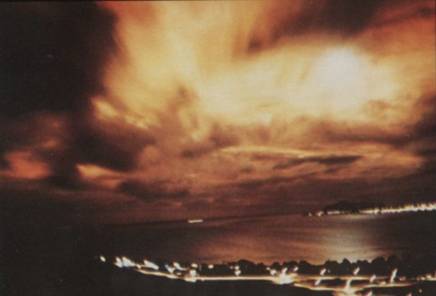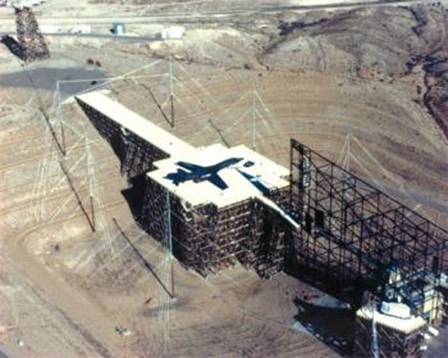An EMP (Electromagnetic Pulse) is sudden burst of wide-band, high-intensity electromagnetic radiation. It has destructive and electromagnetic interference effects. High-energy gamma rays caused by a fission or fusion bomb (nuclear bomb), spreads radially outward from the center of the explosion. If the explosions have occurred at high-altitude the beams reacts with atmosphere, cause the atmospheric gas’s electrons mobilization (Compton electrons) and thus allows the creation of positive and negative charges. Charges caused by this separation, by the effect of the earth’s magnetic field rapidly go into action and form EMP towards the earth. This pulse, couples to all unshielded and unprotected electronic circuits and conductors in its frequency range, causing wrong operation or distortion.
EMP’s frequency range, depends on the source. A nuclear weapon detonated at high-altitude produces relatively long duation EMP, thus contains low frequency components (100 MHz). Because conventional EMP devices produce explosions driven by HPMW technology, they may have a frequency in the range of 100 MHz – 100 GHz. EMP, depending on altitude and power, can generate electric field up to levels of 50 kV / m.
Like many important inventions, dense EMP formed by a high-altitude nuclear explosion was discovered by chance. A series of experiments on the effects of nuclear explosions with the code name of “Operation Fishbowl” in the years of 1960s carried out over the Pacific Ocean, has provided many data related with EMP.
In 1962, nuclear explosion test carried on Johnston Island by U.S. code named “Starfish Prime” gave scary information about the effects of EMP. Detonated at about 400 km altitude which is 1.4 megatons of TNT equivalent bomb, at Hawaiian Islands, 1400 km away from the explosion, has caused the street lamps and fuses to explode, telephone exchanges to deteriorate and running car engines to stop.

The view of the Starfish Nuclear Detonation in sky, 1300 km away from the explosion point (July, 1962)
Although the damaging effects of a conventional explosion is known as the mechanical damage formed by transmission of shock wave, but also in such a detonation:
50% shock wave
35% thermal radiation
15% of nuclear radiation
occur.
Electromagnetic weapons cause improper operation effect on the target, by mainly inducing pulses on a digital device’s internal or external signal lines, and thus disrupting the original digital signal. In well-designed systems (eg. telephone lines) distorting signals can be destroyed in transmission lines (external), but the interference that has entered into the system in even a signal, will lead to data loss. This results in defective results, such as sending incorrect data or system crash. Electromagnetic field that has reached to sufficient size, priority targets the semiconductors of the device, and burning the chips and IC’s of the device it causes to completely breakdown of the system. This injury usually occurs when the device is operating. The more powerful electromagnetic fields make more thermal effects and thus can cause burning of the circuit elements even when the system is off.
One of the greatest difficulties encountered in EMP is the random nature of the generated field. Impact may scroll in any direction and effect many regions on earth which is an unintended situation. Another problem is the effect of the charged particles formed by a high-altitude EMP to Van Allen radiation belts of earth. In this case, the satellites that pass from radiation belt will be damaged, moreover the charged particles will remain for a long time in the radiation belt causing troubles to identify which satellites are affected.

TRESTLE EMP Simulator (U.S. Air Force, Kirtland)
To identify and inspect the kinds of damages of EMP on a device or system, EMP simulators are used. EMP simulators in general consists of a pulse voltage generator, the unit that connects the generator to the coupling system and the coupling system which is called antenna. The high voltage pulse produced by the generator is applied as electromagnetic field to the device under test by antenna. Generator is commonly in the form of Marx circuit. Marx generator works with the principle of charging the capacitive units in parallel and by a sudden switching, discharging them in series. The pulse voltages used to produce EMP are generally high speed pulses that rises to peak level in a few nanoseconds and then fall down in a longer duration. The EMP’s generated by natural sources as lightning have rise and fall times in the orders of microseconds.
Nuclear EMP is a versatile, wide-band radiation that can affect large areas. The conventional EMP can be distinguished by its directed form and smaller impact area with a center microwave frequency effect. Instant measures are meaningless because the effects come with a speed of light. EMP measures to be taken should include proper shielding for a wide frequency range, filtering the conductors and proper grounding.
For more information or to share your opinions please contact me;
![]()




